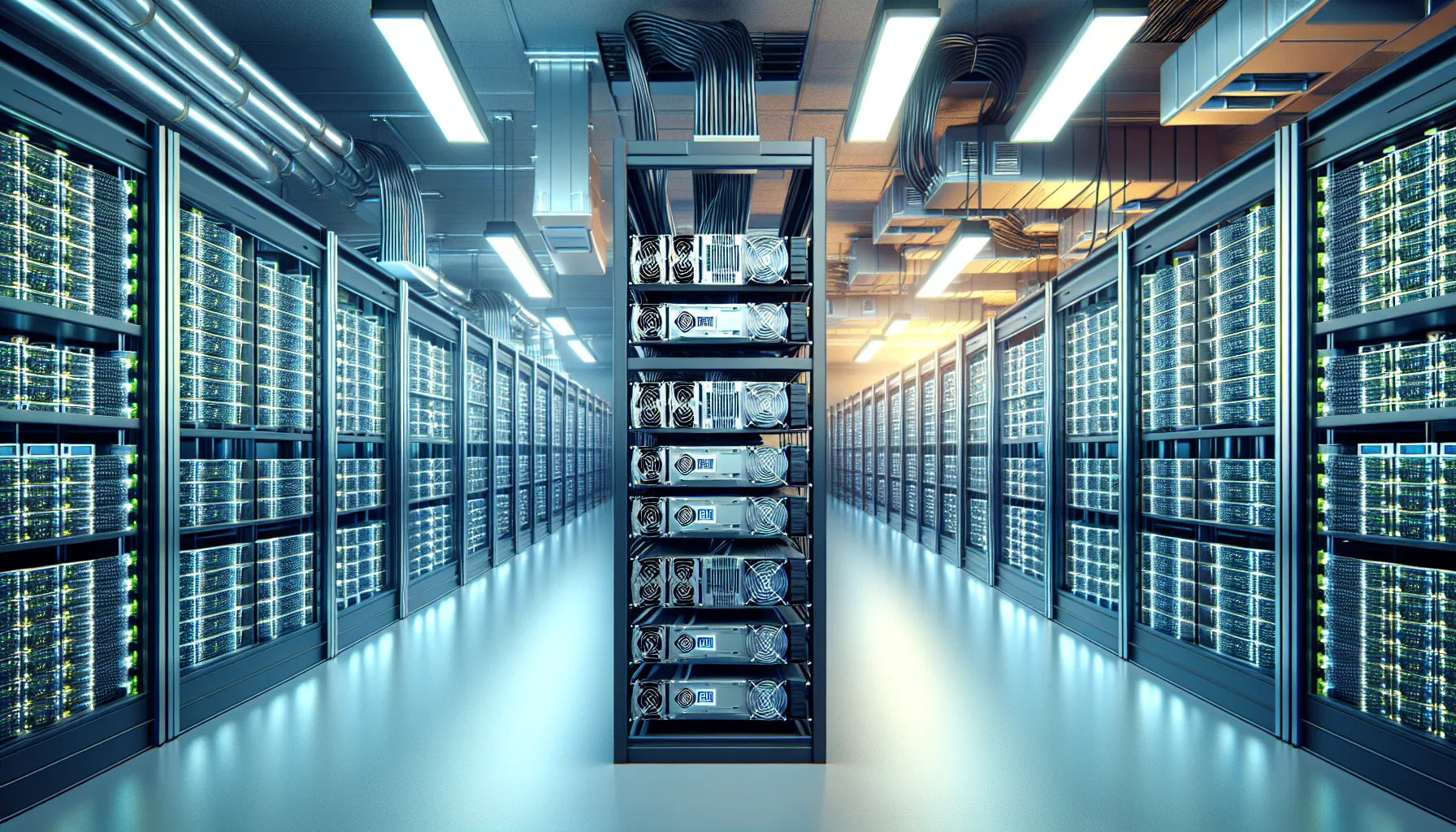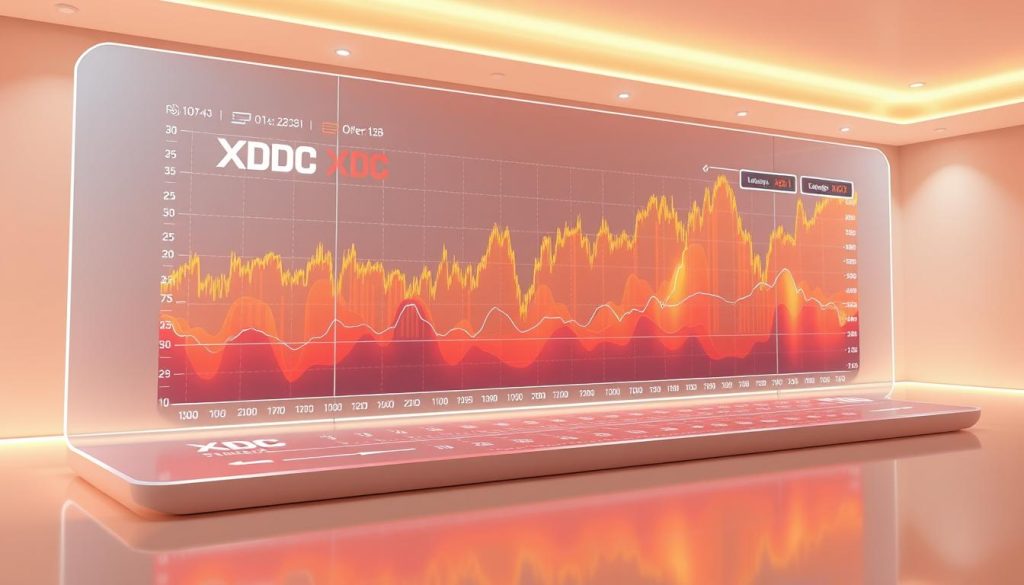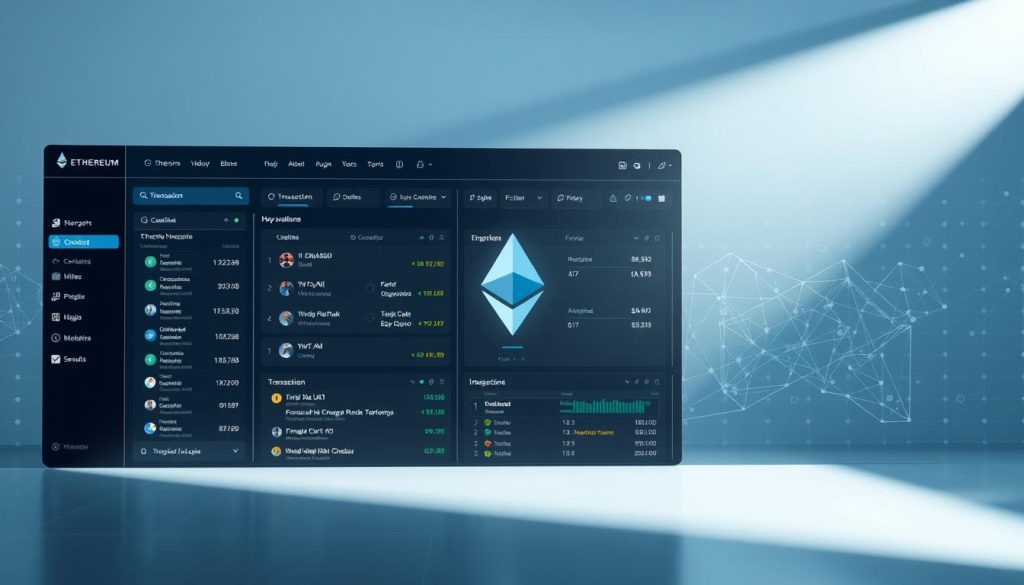Key Takeaways
- Bitcoin server farms are industrial-scale facilities housing thousands of specialized ASIC miners that operate 24/7 to validate Bitcoin transactions and secure the network, requiring massive electrical infrastructure and sophisticated cooling systems to maintain optimal performance.
- Location and energy costs are critical success factors for profitability, with facilities needing electricity rates below $0.06 per kWh and strategic placement in regions with favorable climates, supportive regulations, and reliable power grids to remain competitive.
- Initial investment requirements are substantial ranging from $500,000 for smaller commercial operations to $200 million for industrial-scale facilities, with hardware costs representing the largest expense component and ongoing electricity consumption accounting for 60-80% of operational expenses.
- Environmental concerns are driving renewable energy adoption across the industry, with solar, wind, and hydroelectric power offering competitive rates while reducing carbon footprint, leading to predictions that 60% of mining facilities will operate on renewable energy by 2025.
- Market volatility and technical risks pose significant challenges to mining profitability, as Bitcoin price fluctuations and network difficulty adjustments can quickly turn profitable operations into losses, requiring careful risk management and diversification strategies.
- Technological advancement and industry consolidation are reshaping the landscape with next-generation ASIC miners delivering higher efficiency, institutional investors driving market consolidation, and modular containerized solutions offering flexible deployment options for future growth.
You’ve probably heard about Bitcoin mining but might not fully understand the massive infrastructure behind it. Bitcoin server farms represent the industrial backbone of cryptocurrency mining operations where thousands of specialized computers work around the clock to validate transactions and secure the network.
These facilities aren’t your typical server rooms. They’re warehouse-sized operations packed with powerful ASIC miners that consume enormous amounts of electricity while generating significant heat. The scale and complexity of these operations have transformed Bitcoin mining from a hobby activity into a serious industrial enterprise.
Understanding how Bitcoin server farms operate is crucial if you’re considering entering the mining space or simply want to grasp how the world’s largest cryptocurrency maintains its security and processes transactions. These facilities play a vital role in Bitcoin’s decentralized ecosystem and represent millions of dollars in investment and infrastructure.
What Is a Bitcoin Server Farm?
A bitcoin server farm is a specialized industrial facility housing hundreds or thousands of ASIC mining machines dedicated to Bitcoin mining operations. These massive installations represent the backbone of Bitcoin’s decentralized network and differ significantly from traditional data centers in their power consumption, cooling requirements, and operational focus.
Understanding Bitcoin Mining Operations
Bitcoin mining operations in server farms involve running specialized hardware 24/7 to solve complex mathematical problems that validate Bitcoin transactions. Your mining machines compete with other miners worldwide to find the correct hash value that creates new blocks on the Bitcoin blockchain. Each successful block discovery rewards miners with newly minted Bitcoin plus transaction fees from processed payments.
Mining farms typically operate at an industrial scale with facilities ranging from 10 megawatts to over 100 megawatts of power capacity. These operations require consistent electricity supply and generate substantial heat output that demands sophisticated cooling systems. Your bitcoin mining warehouse becomes profitable when the value of mined Bitcoin exceeds operational costs including electricity, maintenance, and facility expenses.
Key Components of Mining Infrastructure
The core infrastructure of a bitcoin mining center includes several critical components that ensure efficient operations:
ASIC Mining Hardware: Application-Specific Integrated Circuits designed exclusively for Bitcoin mining provide the computational power needed for hash calculations. Popular models include Antminer S19 series, WhatsMiner M30S, and AvalonMiner units that deliver hash rates between 90-110 TH/s per machine.
Power Distribution Systems: High-voltage electrical infrastructure distributes electricity to thousands of mining units through PDUs (Power Distribution Units) and specialized wiring systems. Most facilities operate on 480V three-phase power to maximize efficiency and reduce electrical losses.
Cooling Infrastructure: Industrial-grade cooling systems including immersion cooling tanks, air conditioning units, and exhaust fans maintain optimal operating temperatures. Mining hardware generates approximately 3,400 BTU per hour of heat that requires immediate removal to prevent equipment damage.
Network Equipment: Ethernet switches, routers, and internet connections enable mining machines to communicate with Bitcoin’s network and mining pools. Redundant internet connections ensure continuous operation even during network outages.
Monitoring Systems: Automated monitoring platforms track hash rates, power consumption, temperatures, and machine status across the entire facility. These systems alert operators to equipment failures and optimize performance parameters.
How Bitcoin Server Farms Work

Bitcoin server farms operate through coordinated mining processes that run continuously across thousands of specialized machines. These facilities transform raw computational power into Bitcoin rewards through systematic transaction validation and blockchain maintenance.
The Mining Process Explained
Your bitcoin server farm begins each mining cycle by receiving new transaction data from the Bitcoin network. The ASIC miners in your facility download pending transactions from the mempool and group them into candidate blocks containing approximately 2,000-3,000 transactions.
Each mining machine runs the SHA-256 hashing algorithm billions of times per second to find a specific hash value that meets the network’s difficulty requirements. Your miners compete against other bitcoin mining warehouses globally to solve this cryptographic puzzle first, with the current difficulty adjusting every 2,016 blocks to maintain a 10-minute average block time.
The winning miner broadcasts the solved block to the network, receiving a block reward of 6.25 Bitcoin plus transaction fees totaling 0.1-0.5 Bitcoin per block. Your bitcoin mining center validates incoming blocks from other miners and immediately begins working on the next block, creating a continuous cycle of competition and validation.
Network nodes verify each solved block within seconds, ensuring your mining operations follow consensus rules. Failed blocks generate no revenue, making consistent uptime and optimal hash rate performance critical for profitability in your mining warehouse operations.
Hardware Requirements and Specifications
Your bitcoin server farm requires ASIC miners specifically designed for SHA-256 hashing, with current-generation models delivering 90-110 terahashes per second (TH/s). Popular mining hardware includes the Antminer S19 Pro (110 TH/s), Whatsminer M30S+ (100 TH/s), and AvalonMiner 1246 (90 TH/s).
Power consumption defines your operational costs, with modern ASIC miners consuming 29-35 watts per terahash. Your facility typically houses 1,000-10,000 miners, requiring 3-30 megawatts of electrical capacity depending on scale and hardware efficiency.
| Hardware Component | Specifications | Power Requirements |
|---|---|---|
| ASIC Miners | 90-110 TH/s hash rate | 3,000-3,500 watts each |
| Power Distribution | 480V three-phase systems | 99.5% efficiency rating |
| Cooling Systems | 25-30°C operating temperature | 20-30% of total power |
| Network Equipment | 1-10 Gbps internet connectivity | 100-500 watts per rack |
Your mining infrastructure includes industrial-grade power distribution units, redundant internet connections, and environmental monitoring systems. Each mining rack requires precise spacing for airflow management, with hot aisle/cold aisle configurations maximizing cooling efficiency in your bitcoin mining warehouse.
Backup power systems protect against grid failures, while automated monitoring tracks hash rates, temperatures, and power consumption across your entire bitcoin mining center. These systems enable remote management and rapid response to equipment failures or performance issues.
Types of Bitcoin Server Farms
Bitcoin server farms operate across different scales and configurations based on your investment capacity and operational requirements. Understanding these distinct categories helps you identify the most suitable mining approach for your specific circumstances.
Industrial-Scale Mining Facilities
Industrial-scale mining facilities represent the largest category of bitcoin server farms, typically housing 10,000 to 100,000 ASIC miners across multiple warehouse buildings. These bitcoin mining warehouses consume 50-200 megawatts of electricity and require dedicated electrical substations to handle their massive power demands.
Major mining companies like Marathon Digital and Riot Blockchain operate these facilities across locations in Texas, North Dakota, and other states with favorable electricity rates. Each bitcoin mining center spans 100,000 to 500,000 square feet and employs specialized cooling systems including immersion cooling and industrial-grade air conditioning units.
You’ll find these operations concentrate in regions with electricity costs below $0.05 per kilowatt-hour and maintain partnerships with utility companies for direct power procurement. The facilities feature redundant power systems, on-site electrical engineers, and 24/7 monitoring capabilities to maximize uptime across thousands of mining machines.
Smaller Commercial Operations
Smaller commercial operations typically deploy 100 to 5,000 ASIC miners in converted warehouses or purpose-built facilities ranging from 5,000 to 50,000 square feet. These bitcoin mining warehouses consume 1-25 megawatts of electricity and often lease space in existing industrial buildings rather than constructing dedicated facilities.
You can establish these operations with initial investments of $500,000 to $10 million, making them accessible to individual entrepreneurs and smaller mining companies. These facilities focus on specific geographic markets with competitive electricity rates and often partner with local utility providers for power agreements.
Container-based mining solutions represent another category within smaller operations, where you deploy 50-200 miners in modified shipping containers equipped with cooling and power distribution systems. These portable bitcoin server farms offer flexibility for deployment across different locations and rapid scaling based on market conditions.
Location and Setup Considerations
Your bitcoin server farm’s location directly impacts profitability through electricity costs, cooling requirements, and regulatory compliance. Site selection determines operational efficiency and long-term viability of your mining operation.
Climate and Cooling Requirements
Your bitcoin mining warehouse requires consistent cooling solutions to maintain optimal hardware performance. ASIC miners generate substantial heat during operation, with each unit producing 3,000-4,000 watts of thermal energy continuously.
Cold climate regions reduce cooling costs by 30-50% compared to hot environments. Northern locations like Canada, Iceland, and northern U.S. states provide natural cooling advantages throughout most of the year. Your facility benefits from ambient temperatures below 60°F (15°C) for optimal heat dissipation.
Immersion cooling systems submerge mining equipment in specialized dielectric fluids, increasing efficiency by 20-25%. These systems maintain temperatures at 104-140°F (40-60°C) while reducing noise levels by 30 decibels. Traditional air cooling requires massive ventilation systems consuming 10-15% of total facility power.
Humidity control prevents condensation damage to sensitive electronics. Your bitcoin server farm maintains relative humidity between 30-50% using industrial dehumidification systems. Excessive moisture causes corrosion and electrical shorts, while low humidity creates static electricity risks.
Power Supply and Energy Costs
Your bitcoin mining center requires industrial-grade electrical infrastructure to support continuous high-power operations. Single facilities consume 10-200 megawatts of electricity, equivalent to powering 7,500-150,000 average homes.
Electricity rates below $0.06 per kilowatt-hour enable profitable mining operations at current Bitcoin prices. Texas, Wyoming, and Washington state offer competitive industrial rates between $0.03-$0.05 per kWh. Your location choice directly determines 70-80% of operational expenses.
| Region | Average Rate ($/kWh) | Annual Cost (1 MW) |
|---|---|---|
| Texas | $0.035 | $306,600 |
| Wyoming | $0.045 | $394,200 |
| Washington | $0.040 | $350,400 |
| New York | $0.120 | $1,051,200 |
Three-phase power distribution at 480V provides efficient electricity delivery to mining equipment. Your facility requires redundant power feeds from separate utility substations to prevent downtime. Backup generators maintain operations during grid failures, protecting against revenue loss.
Power factor correction systems reduce reactive power consumption by 15-20%. Your bitcoin server farm installs capacitor banks to maintain power factor above 0.95, avoiding utility penalties and improving electrical efficiency.
Regulatory and Legal Factors
Your bitcoin mining warehouse operates under varying regulatory frameworks that affect site selection and operational compliance. Local zoning laws determine permissible industrial activities and noise restrictions in specific areas.
Building permits require detailed electrical load calculations and safety inspections before operation. Your facility meets National Electrical Code (NEC) standards for high-power installations, including proper grounding systems and fire suppression equipment.
Environmental regulations govern noise emissions, with most municipalities limiting industrial noise to 55-65 decibels at property boundaries. Your mining operation installs sound dampening systems or maintains adequate distance from residential areas to comply with local ordinances.
Tax incentives reduce operational costs in certain jurisdictions. Texas offers renewable energy tax credits for mining operations using solar or wind power. Wyoming provides favorable business tax structures with no corporate income tax on mining activities.
International operations face additional compliance requirements including import duties on mining equipment and foreign exchange regulations. Your cross-border mining center navigates customs procedures and maintains proper documentation for equipment transfers.
Some regions impose mining bans or restrictions on high-energy operations. China’s mining prohibition forced operators to relocate facilities to jurisdictions with supportive regulatory environments. Your site selection considers long-term regulatory stability to protect capital investments.
Profitability and Investment Analysis
Bitcoin server farm profitability depends on balancing substantial upfront investments against operational costs and mining rewards. Your success in this industry requires careful financial planning and realistic projections based on current market conditions.
Initial Setup Costs
Your bitcoin mining warehouse requires significant capital investment before generating any revenue. Industrial-scale facilities demand $50-200 million in initial setup costs, while smaller commercial operations typically require $500,000-$10 million.
Hardware expenses represent the largest cost component:
| Equipment Type | Cost Range | Quantity Needed |
|---|---|---|
| ASIC Miners (S19 Pro) | $2,000-$4,000 each | 100-50,000 units |
| Power Distribution Units | $50,000-$500,000 | 10-100 units |
| Cooling Systems | $100,000-$2 million | 5-50 systems |
| Network Equipment | $10,000-$100,000 | Complete setup |
Infrastructure development adds substantial costs:
- Electrical infrastructure installation: $500-$2,000 per kW capacity
- Building construction or renovation: $100-$300 per square foot
- Backup power systems: $200,000-$2 million
- Security systems and monitoring: $50,000-$500,000
Permitting and regulatory compliance typically cost 5-10% of total project value. Environmental impact assessments, zoning approvals, and utility interconnection fees can add $100,000-$1 million to your initial investment.
Ongoing Operational Expenses
Your bitcoin mining center faces continuous operational costs that directly impact profitability. Electricity consumption represents 60-80% of ongoing expenses, with typical facilities consuming 0.03-0.05 kWh per terahash.
Monthly operational expenses breakdown:
| Expense Category | Cost per MW | Annual Total |
|---|---|---|
| Electricity (at $0.04/kWh) | $288,000 | $3.46 million |
| Maintenance & Repairs | $50,000 | $600,000 |
| Staffing | $30,000 | $360,000 |
| Insurance | $20,000 | $240,000 |
| Internet & Communications | $5,000 | $60,000 |
Equipment replacement creates additional costs. ASIC miners typically last 3-5 years, requiring $2-4 million in annual replacement costs for a 1,000-unit facility. Cooling system maintenance costs $10,000-$50,000 monthly, depending on system complexity and local climate conditions.
Utility demand charges can add 20-30% to electricity costs in commercial rate structures. Your facility’s power factor and peak demand timing significantly impact these charges, with poor power management increasing costs by $50,000-$200,000 annually.
Revenue Potential and ROI
Your bitcoin server farm generates revenue through block rewards and transaction fees, with profitability depending on Bitcoin price, network difficulty, and operational efficiency. Current block rewards of 6.25 Bitcoin plus fees average $160,000-$200,000 per successful block.
Revenue calculation factors:
- Hash rate performance: 90-110 TH/s per modern ASIC
- Network difficulty adjustments every 2,016 blocks
- Pool fees: 1-3% of mining rewards
- Uptime percentage: 95-99% for profitable operations
Typical ROI scenarios for different facility sizes:
| Facility Size | Monthly Revenue | Monthly Costs | Break-even Timeline |
|---|---|---|---|
| 1,000 miners | $180,000 | $150,000 | 18-24 months |
| 10,000 miners | $1.8 million | $1.4 million | 12-18 months |
| 50,000 miners | $9 million | $6.8 million | 8-12 months |
Market volatility significantly impacts returns. Bitcoin price fluctuations of 20-50% monthly can turn profitable operations into losses within weeks. Your facility maintains profitability when Bitcoin trades above $25,000-$30,000, assuming electricity costs below $0.05/kWh.
Network difficulty increases reduce revenue over time. Historical data shows 15-25% annual difficulty growth, requiring equipment upgrades or efficiency improvements to maintain profitability. Your operation’s long-term success depends on securing low-cost electricity contracts and maintaining cutting-edge hardware.
Environmental Impact and Sustainability
Bitcoin server farms face increasing scrutiny over their environmental footprint as energy consumption scales with mining operations. Your understanding of these environmental challenges becomes crucial when evaluating the long-term viability of cryptocurrency mining investments.
Energy Consumption Concerns
Your bitcoin server farm consumes massive amounts of electricity to power thousands of ASIC miners running continuously. Industrial-scale facilities typically consume 50-200 megawatts of electricity, equivalent to powering 37,500-150,000 average American homes simultaneously.
| Facility Type | Power Consumption | Annual Energy Usage | CO2 Emissions (Coal Grid) |
|---|---|---|---|
| Industrial Bitcoin Mining Center | 50-200 MW | 438,000-1,752,000 MWh | 438,000-1,752,000 tons |
| Commercial Bitcoin Mining Warehouse | 1-25 MW | 8,760-219,000 MWh | 8,760-219,000 tons |
| Container-Based Operations | 0.5-2 MW | 4,380-17,520 MWh | 4,380-17,520 tons |
Studies indicate that Bitcoin mining consumes approximately 120-150 terawatt-hours annually worldwide, representing 0.5-0.7% of global electricity consumption. Your facility’s carbon footprint depends heavily on the local electricity grid composition, with coal-powered regions producing significantly higher emissions than those using natural gas or renewable sources.
Renewable Energy Solutions
Your bitcoin server farm can significantly reduce its environmental impact by transitioning to renewable energy sources. Solar, wind, and hydroelectric power offer increasingly competitive rates while providing long-term price stability for mining operations.
Major mining companies have begun implementing renewable energy strategies with measurable results. Marathon Digital partnered with renewable energy providers to achieve 30% carbon-neutral mining by 2022, while Riot Blockchain’s Texas facility operates on a grid with 20% renewable energy capacity.
Solar Power Integration
- Installation costs: $1.50-$3.00 per watt capacity
- Payback period: 3-7 years depending on location
- Efficiency rates: 15-22% for commercial panels
Wind Power Partnerships
- Power purchase agreements: $0.02-$0.05 per kWh
- Capacity factors: 25-45% in optimal locations
- Grid integration requires backup power systems
Hydroelectric Facilities
- Electricity rates: $0.01-$0.03 per kWh
- Consistent 24/7 power generation
- Geographic limitations restrict site selection
Your bitcoin mining warehouse can also implement energy efficiency measures to reduce overall consumption. Immersion cooling systems decrease power usage by 20-30% compared to traditional air cooling, while advanced power management systems optimize electricity distribution across mining equipment.
Heat recovery systems capture waste heat from mining operations for practical applications including greenhouse heating, industrial processes, and residential heating systems. Several facilities now sell excess heat to nearby businesses, creating additional revenue streams while reducing environmental waste.
Challenges and Risks
Operating a bitcoin server farm presents significant challenges that can impact profitability and operational stability. Market volatility, technical failures, and increasing competition create complex risk profiles that require careful management and strategic planning.
Market Volatility Effects
Bitcoin price fluctuations directly impact your mining profitability calculations and return on investment timelines. A price drop from $65,000 to $30,000 can reduce your daily revenue by 54% while your operational costs remain constant. Your bitcoin server farm generates the same computational output regardless of market conditions, creating periods where mining becomes unprofitable.
Network difficulty adjustments compound price volatility effects by increasing the computational power required to mine blocks. When Bitcoin’s price rises, more miners join the network, increasing difficulty by 10-15% every two weeks. Your existing hardware produces fewer Bitcoin rewards as competition intensifies, even during favorable market conditions.
Revenue forecasting becomes challenging when both price and difficulty variables change simultaneously. Your bitcoin mining warehouse might generate $50,000 daily revenue at current difficulty levels, but a 20% difficulty increase reduces this to $41,667 without any price changes. Planning capital expenditures and operational budgets requires modeling multiple scenarios across different price and difficulty combinations.
Technical and Operational Issues
Hardware failures represent your most immediate operational risk, with ASIC miners experiencing 5-10% annual failure rates under continuous operation. A single failed miner in your bitcoin mining center reduces hash rate output and creates maintenance costs ranging from $500-2,000 per unit. Replacing failed components requires skilled technicians and spare parts inventory, adding operational complexity.
Power infrastructure failures can shut down entire mining operations for hours or days, eliminating revenue generation during downtime. Electrical systems in bitcoin server farms operate at maximum capacity, creating higher failure risks than traditional data centers. Transformer failures, power grid outages, and cooling system breakdowns can force emergency shutdowns that damage equipment and interrupt mining operations.
Network connectivity issues disrupt your mining pool connections and prevent block submissions, causing lost revenue opportunities. Your bitcoin mining warehouse requires redundant internet connections to maintain consistent uptime, but ISP failures still create vulnerability windows. Latency spikes above 100 milliseconds can cause block rejections, reducing your effective hash rate contribution.
Environmental challenges include extreme weather events that damage facilities or interrupt power supplies. Flooding, hurricanes, and ice storms can destroy mining equipment worth millions of dollars. Your cooling systems become less efficient during heat waves, forcing operational throttling that reduces hash rate output by 15-25%.
Competition and Difficulty Adjustments
Global mining competition intensifies as institutional investors deploy large-scale bitcoin server farms with cutting-edge hardware. Companies like Marathon Digital and Riot Blockchain operate facilities with 100,000+ miners, creating competitive pressure that smaller operations struggle to match. Your mining center competes against operations with better economies of scale and lower electricity costs.
Difficulty adjustments occur every 2,016 blocks (approximately 14 days), automatically increasing mining requirements as network hash rate grows. Historical data shows difficulty increases averaging 8-12% monthly during bull markets, reducing your mining rewards proportionally. Your hardware becomes less effective over time without upgrades, creating continuous capital expenditure requirements.
Technological advancement cycles render existing hardware obsolete within 24-36 months of deployment. New ASIC generations offer 20-40% efficiency improvements, forcing you to upgrade equipment or accept declining profitability. Your bitcoin mining warehouse must budget for regular hardware refreshes to maintain competitive hash rates and energy efficiency ratios.
Geographic competition affects electricity pricing and regulatory environments, with mining operations migrating to regions offering cheaper power. Kazakhstan, Russia, and certain U.S. states provide electricity rates below $0.05 per kWh, creating cost advantages your facility might not match. Regulatory changes in major mining regions can shift global hash rate distribution, affecting difficulty levels and competition intensity.
Future of Bitcoin Server Farms
Bitcoin server farms are entering a transformative phase driven by technological innovation and evolving market dynamics. The industry’s future depends on adapting to new hardware capabilities and shifting operational paradigms.
Technological Advancements
Next-generation ASIC miners are revolutionizing bitcoin mining warehouse operations with enhanced efficiency and performance capabilities. Manufacturers like Bitmain and MicroBT are developing 3-nanometer chips that deliver 200+ terahashes per second while consuming 40% less electricity than current models. These advanced miners enable bitcoin mining centers to achieve higher hash rates with reduced operational costs.
Immersion cooling technology is becoming standard in large-scale facilities, increasing mining efficiency by 20-30% compared to traditional air cooling systems. Your bitcoin server farm can benefit from these liquid cooling solutions that maintain optimal operating temperatures while reducing energy consumption. Heat recovery systems integrated with these cooling technologies now generate additional revenue streams by providing thermal energy for adjacent facilities.
Artificial intelligence and machine learning algorithms are optimizing mining operations through predictive maintenance and automated performance tuning. These systems monitor equipment health in real-time, reducing downtime by 15-25% and extending hardware lifespan. Smart power management systems automatically adjust mining intensity based on electricity prices and network conditions, maximizing profitability during peak periods.
Industry Trends and Predictions
Renewable energy integration is accelerating across bitcoin mining centers, with solar and wind power installations becoming economically viable for large-scale operations. By 2025, industry analysts predict 60% of mining facilities will operate on renewable energy sources, driven by both environmental concerns and cost advantages. Your bitcoin mining warehouse can achieve energy independence while reducing carbon footprint through these sustainable power solutions.
Geographical diversification is reshaping the mining landscape as operators seek regulatory stability and favorable energy costs. Texas, North Dakota, and Wyoming are emerging as preferred destinations for new bitcoin server farm installations, offering supportive regulations and abundant renewable energy resources. International expansion into countries like Kazakhstan and Paraguay provides access to low-cost electricity and mining-friendly policies.
Institutional adoption is driving consolidation within the mining industry, with publicly traded companies acquiring smaller operations to achieve economies of scale. Marathon Digital, Riot Blockchain, and CleanSpark are expanding their mining capacity through strategic acquisitions and facility upgrades. This trend creates opportunities for smaller operators to partner with larger entities or develop specialized niche services.
Modular and containerized mining solutions are gaining popularity for their flexibility and rapid deployment capabilities. These standardized units allow bitcoin mining centers to scale operations quickly and relocate equipment based on market conditions. Container-based systems reduce infrastructure development costs by 30-40% while maintaining operational efficiency comparable to traditional facilities.
Conclusion
Your success in Bitcoin server farm operations depends on understanding the complex balance between technological innovation and market dynamics. The industry’s evolution toward renewable energy integration and institutional adoption is reshaping how you’ll need to approach mining investments.
Whether you’re considering a small-scale operation or an industrial facility you’ll face significant challenges around profitability margins and regulatory compliance. The shift toward more efficient ASIC miners and advanced cooling systems will require continuous capital investment to maintain competitiveness.
The future of Bitcoin mining lies in sustainable operations that can adapt to changing market conditions. Your ability to secure low-cost electricity contracts and implement cutting-edge technology will ultimately determine your long-term success in this rapidly evolving industry.
Frequently Asked Questions
What is a Bitcoin server farm?
A Bitcoin server farm is a specialized industrial facility housing hundreds or thousands of ASIC mining machines dedicated to Bitcoin mining operations. These facilities differ from traditional data centers in their power consumption, cooling requirements, and operational focus. They serve as the backbone of Bitcoin’s decentralized network, running specialized hardware 24/7 to solve complex mathematical problems and validate transactions on the blockchain.
How do Bitcoin server farms make money?
Bitcoin server farms generate revenue through block rewards and transaction fees. When miners successfully validate a block of transactions, they earn 6.25 Bitcoin plus transaction fees. Profitability depends on the value of mined Bitcoin exceeding operational costs, including electricity and maintenance. The winning miner broadcasts the solved block to the network, competing globally against other mining operations.
What equipment is needed for a Bitcoin server farm?
Essential equipment includes ASIC miners with hash rates of 90-110 terahashes per second, industrial-grade power distribution systems, cooling infrastructure, and network equipment. Additional requirements include backup power systems, environmental monitoring systems, and automated tracking tools for hash rates, temperatures, and power consumption to ensure optimal performance and remote management capabilities.
How much does it cost to set up a Bitcoin server farm?
Initial setup costs vary significantly by scale. Industrial-scale facilities require $50-200 million investments, while smaller commercial operations typically need $500,000-$10 million. Major cost components include hardware, infrastructure development, and regulatory compliance. Ongoing operational expenses, primarily electricity consumption, represent 60-80% of total costs, making location selection crucial for profitability.
Where should Bitcoin server farms be located?
Optimal locations feature low electricity costs, cold climates for reduced cooling expenses, and favorable regulatory environments. Cold regions can significantly reduce cooling costs, while specific electricity rates are necessary for profitable operations. Factors include local zoning laws, building permits, environmental regulations, and potential tax incentives. Site selection should ensure long-term regulatory stability.
What are the environmental impacts of Bitcoin server farms?
Bitcoin server farms consume significant energy and produce substantial carbon footprints. Industrial-scale facilities can consume 50-200 megawatts of electricity. However, major mining companies are increasingly adopting renewable energy strategies, including solar, wind, and hydroelectric power. Energy efficiency measures like immersion cooling systems and heat recovery can further reduce consumption and create additional revenue streams.
What are the main risks of operating a Bitcoin server farm?
Key risks include market volatility affecting Bitcoin prices, technical failures disrupting operations, and increasing competition from institutional investors. Network difficulty adjustments can complicate revenue forecasting. Hardware failures, power infrastructure issues, and connectivity challenges can lead to lost revenue. Larger institutional investors are dominating the market, creating pressure on smaller operations.
What is the future outlook for Bitcoin server farms?
The future involves technological innovation with next-generation ASIC miners and immersion cooling becoming standard. AI and machine learning integration will optimize operations and reduce downtime. Industry trends show a shift toward renewable energy integration, with predictions that significant portions of mining facilities will operate on sustainable sources by 2025. Modular and containerized solutions are gaining traction for flexibility.










 Bitcoin
Bitcoin  Ethereum
Ethereum  Tether
Tether  XRP
XRP  Solana
Solana  USDC
USDC  TRON
TRON  Lido Staked Ether
Lido Staked Ether  Dogecoin
Dogecoin